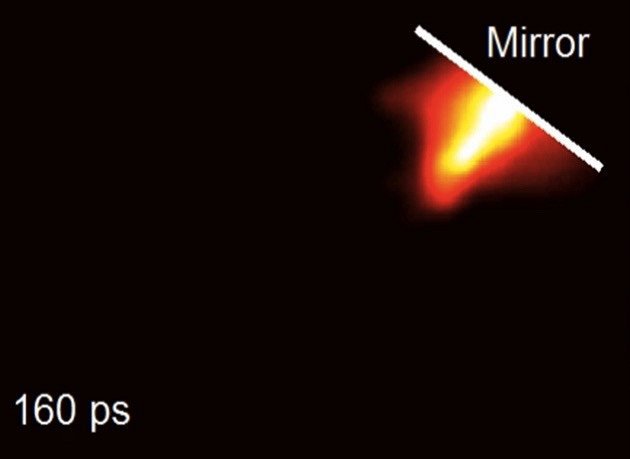New high-speed camera capable of recording 100 billion frames per second

A group of scientists from the University of Washington at St. Louis (WUSTL) has created, perhaps, one of the fastest cameras in the world. The system is capable of making 100 billion shots per second. And this means that even a ray of light “in flight” can be captured on the image. What is depicted in the announcement photos is the light reflected from the mirror.
The fastest camera that existed before the creation of the new system could record about 10 million frames per second. The capabilities of the system were limited by the bottleneck - the drive speed, read / write speed.
')

Now, for the first time, a person sees a light pulse "in flight". In any case, says the head of the research group Lihong Wang. The scientist hopes that the achievement of his team will help to achieve new heights in science, to make new, important discoveries.
The system itself is quite complex, there is a large number of optical systems and electronic components.

The central element of the system is a micromirror digital device (DMD), which holds more than a million microscopic mirrors, each less than 7 microns in size. DMD sizes are comparable to the size of a small coin. The beam of light is transmitted by the lenses through a long tube to this micromirror device, which encodes the image, reflecting a beam of light into the beam splitter, after which the photons enter the slot of the camera. Already here the photons are converted into electrons, separated by two electrodes. The voltage on the electrodes increases, so that the electrons fall into different positions at different times.
The data is then transferred to a charge coupled device, for transmission to a PC. The computer analyzes the information received, and the scientists get images at the output. The cycle time is only 5 nanoseconds.
The inventors claim that the scope of their discovery is very wide. For example, the system can be used to obtain images of fluorescent proteins (to clearly demonstrate the flow of chemical and biological reactions).
The discovery can also be used in astronomy, for processing images obtained by orbital telescopes.
The abstract of the study can be found here , there is also a video, which, unfortunately, cannot be pasted on Geektimes.
Source: https://habr.com/ru/post/363953/
All Articles